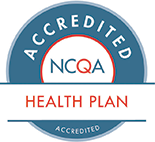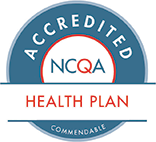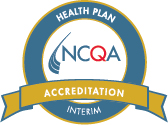Medical benefits
- What is a deductible?
-
A deductible is the amount of money that you pay out of your own pocket for covered services before the plan begins to pay benefits.
- What does the term "coinsurance" mean?
-
After paying the deductible amount, you will split the cost of eligible healthcare services with the insurer. The percentage that you pay is called coinsurance. The specific percentage for each service is listed in the plan's member handbook. Once you have paid enough coinsurance to reach the out-of-pocket maximum, the insurer pays 100% of eligible expenses for the rest of the plan year.
For example, if a health plan has an 80/20 in-network coinsurance rate for a specific service, after the deductible has been satisfied the plan is responsible for 80 percent of the eligible charges and you are responsible for 20 percent. You will continue to pay coinsurance percentages until you reach your plan-year out-of-pocket maximum, at which point the plan will pay for 100 percent of the eligible expenses (subject to any limitations).
- How is coinsurance different from a copay?
-
While a copayment (or copay) is a fixed dollar amount that you pay for certain services, coinsurance is based on a percentage of the amount the plan allows for the service.
For example, if the plan allows $300 for a specific service and has a $50 copay, you would pay $50 and the plan would pay $250. If, however, the plan has 20% coinsurance for the service, you would pay $60 and the plan would pay $240.
Review your member handbook for details specific to each service.
- If I am on a plan that requires some medical copayments, does the deductible need to be met before the services with copayments are paid?
-
Some services with copayments (such as PCP 360 primary care office visits, incentive care visits, mental health and urgent care visits) are paid without requiring the deductible to be met. You only need to pay the copayment and the plan pays the balance.
Some services, such as emergency room visits, additional cost-tier procedures, and bariatric surgery, require you to pay the copayment followed by the annual deductible. The plan will then pay at the appropriate coinsurance level.
Review your member handbook closely for details related to these services.
- What does the term "out-of-pocket maximum" mean?
-
This is the most you pay in a plan year for covered pharmacy and medical services before benefits are paid in full by the plan. This includes your deductible, coinsurance and copay amounts. There are expenses that you may need to pay that do not apply toward your out-of-pocket maximum, such as disallowed charges or balance billing amounts for out-of-network providers. Once you meet your out-of-pocket maximum, the plan covers all eligible medical expenses at 100 percent.
- Do all expenses apply to my medical out-of-pocket maximum?
-
No.
You are responsible for the following costs. They do not accrue toward the out-of-pocket maximum and you must pay for them even after the out-of-pocket maximum is met:
- The out-of-pocket expenses for bariatric surgery not performed at a Center of Excellence facility, or out-of-pocket expenses above the Center of Excellence $20,000 benefit maximum
- Expenses incurred due to brand substitution
- The out-of-pocket expense for an oral appliance above the $1800 reference price per appliance
- The out-of-pocket expenses for hip and knee replacements above the $25,000 benefit maximum
- The out-of-pocket expenses for infertility treatment
- Services in excess of any maximum
- Fees in excess of maximum plan allowance
- Premiums
- Disallowed charges
- Does the deductible for in- and out-of-network commingle (meaning that there is one deductible for both in- and out-of-network services combined)?
-
No. In-network and out-of-network deductibles are separate.
- How does deductible carryover work?
-
On medical plans 1-5, if you do not meet your deductible (individual or family) during a plan year, any expenses applied to your deductible during the last 3 months of that plan year will be carried over and applied to the deductible for the following plan year.
- Does the out-of-pocket maximum for in- and out-of-network services commingle (meaning that there is one maximum for both combined)?
-
No. In-network and out-of-network out-of-pocket maximums are separate.
- What is the "maximum plan allowance"?
-
Maximum Plan Allowance (MPA) is the maximum amount that Moda Health will reimburse a non-contracted provider. A non-contracted provider may bill you for any amount over the MPA. This may leave you with a high out of pocket balance. If you are considering using a non-contracted provider, contact the Health Navigator team for help in understanding your out-of-network benefits and any additional charges that you may have to pay.
- What are my benefits while traveling?
-
You have access to the Moda Health travel network for when traveling outside of the Connexus service area. For medical plans, the travel network allows you to receive urgent or emergency care outside of your primary service area while traveling.
The Moda Health travel network is not an alternative primary network. You must seek in-network services whenever possible, and preauthorization is required for inpatient services.
The in-network benefit level only applies to a travel network provider if you are outside the primary service area and the travel is not for the purpose of receiving treatment or benefits. The travel network is not available to you if your primary network provides nationwide access.
If you are traveling outside of the service area and seek care from an out-of-network physician or provider, the benefit will be paid at the out-of-network benefit level. Out-of-network benefits are subject to the maximum plan allowable, and providers may bill you for the difference.
Aetna PPO® through Aetna Signature Administrators® (ASA), is the travel network beginning October 1, 2022. Prior to that, the travel network was First Health in all states. See your member handbook for details.
You can find a travel network provider by using Find Care through the Member Dashboard or by contacting the Health Navigator team at 866-923-0409 for assistance.
- What are my benefits for my out-of-area dependents?
-
If a dependent lives outside the Connexus network area, the OEBB employee must update the dependent's address in the myOEBB system prior to the dependent seeking services. The dependent will have access to Aetna PPO through Aetna Signature Administrators® (ASA), except for dependents who live in Idaho or Alaska.
Members who live in Idaho will continue to use both the Connexus and PHCS networks. Members who live in Alaska will continue to use the PHCS network.
To locate an in-network provider, call the Health Navigator team at 866-923-0409 or use FindCare and search by the applicable network (Aetna PPO though Aetna Signature Administrators®, Connexus, or PHCS network).
- What if I am outside of the service area and have a medical emergency?
-
Any time you have a medical emergency, you should go to the nearest emergency room or urgent care facility.
If the facility is within the travel network, benefits will be paid at the in-network benefit level up to the facility's contracted allowable amount.
If the facility is outside the travel network, benefits will be paid at the in-network benefit level up to the maximum plan allowable. This means that you could be responsible for any charges that are more than the maximum amount allowed by the plan.
- If I have a specific condition and need to continue to see a provider that is not in the network, will Moda Health pay at the in-network benefit level?
-
Transition of Care services may be approved under extraordinary circumstances for a set period if you, while actively receiving medically necessary services, move from a health plan with another carrier to Moda Health and, as a result, have ongoing medical services that become out of network. You or your doctor must complete a Transition of Care form that Moda Health will review for approval.
- How do Medical Plans 6 & 7, the Health Savings Account (HSA) compliant plans, work?
-
HSA-compliant High Deductible Health Plans are designed to work with a tax-favored health savings account (HSA) used to pay medical expenses. These high-deductible health plans (HDHPs) meet certain IRS requirements for deductibles and out-of-pocket expense limits. OEBB Plans 6 & 7 are HSA-compliant HDHPs.
These plans have a high deductible that must be met prior to any benefits being paid (except for specific preventive services when performed by in-network providers). The plans are intended to allow you to use your HSA funds to pay for out-of-pocket expenses until the deductible is met, though an HSA is not required to select Plans 6 and 7.
It is important to understand that the family deductible is a shared deductible. This means that if more than one person is covered on the plan, the entire family deductible must be satisfied before benefits are payable for any services subject to the deductible. On HDHPs nearly all services apply to the deductible, except preventive care. This is different from how the deductibles work on the other plans, where each person can separately meet their own deductible.
Please note: if you use an HSA, IRS regulations require that all plans covering you must be HSA-compliant HDHPs. This means that you may not be able to coordinate benefits between two plans unless both are HSA-compliant.
- How do I find a PCP 360 provider?
-
We recommend that you log into your Member Dashboard account and go to the PCP 360 tab to search for PCP 360s. If you are not a member yet or don't have access to your Member Dashboard, you can follow these simple steps:
- Go to Find Care, our online provider directory
- Choose Medical care
- In the search criteria for Provider Type, choose "PCP 360"
Once you've decided on a PCP 360, log in to your Member Dashboard or contact the Health Navigator team to select that provider as your designated PCP 360.
- What is a PCP 360 Wellness Visit?
-
The Wellness Visit is covered in full once per plan year in addition to an annual preventive exam/physical for members aged 21 and over. You must see a Moda Medical Home provider if you are on a non-coordinated care plan, or your PCP 360 if you are on a coordinated care plan.
The visit is a discussion focused on overall wellness rather than treating a specific condition. This discussion could involve exercise, weight management, physical activity, depression, tobacco or substance use.
- What is an incentive office visit?
-
On Medical Plans 1-5, you pay a lower office visit copay or coinsurance for visits to manage certain conditions. These conditions include:
- Asthma
- Heart conditions
- Cholesterol
- High blood pressure
- Diabetes
This lower copay applies when you see your PCP 360 or an in-network specialist.
- What is the Additional Cost Tier?
-
The Additional Cost Tier refers to select procedures on medical plans 1-5 that require you to pay a copay in addition to any deductible and coinsurance. These include:
$100 copay:
- Upper endoscopy
- Spinal injections
- Viscosupplementation
- Lumbar discography
- Tonsillectomy for a member under age 18 with chronic tonsillitis or sleep apnea
- Sleep studies
- Imaging procedures (CT, PET, MRI)
$500 copay:
- Arthroscopy (knee and shoulder)
- Spine surgery
- Uncomplicated hernia repair
- Knee / Hip Replacement (subject to reference pricing limitations)
We encourage you to discuss treatment options with your provider and to explore less invasive alternatives to these services if possible.
- What is a reference price?
-
A reference price is a set price for a specific covered service that typically has a wide variation in provider charges. Moda's networks include providers whose charges are at or below the reference price. If you choose to use a provider who charges above the reference price threshold, you will be responsible for paying the difference between the reference price and the provider's contracted rate.
Services that have a reference price on OEBB plans include:
- Knee and hip replacement
- Oral appliances for sleep apnea
- Bariatric surgery
For a list of providers who charge below the reference price amount for knee and hip replacements, see the Reference Price Program. You can also call the Health Navigator team at 866-923-0409.
- What is the benefit for alternative care providers?
-
Alternative care refers to spinal manipulation and acupuncture services. If you see an in-network alternative care provider, you will pay either a copayment or coinsurance, depending on if you have chosen coordinated or non-coordinated care. Out of network care applies to your out-of-network benefits and deductible, and you must pay any amount over the maximum plan allowance. Spinal manipulation and acupuncture services are limited to a maximum of 12 combined visits per plan year.
- What disease management programs does Moda Health offer?
-
Moda Health offers the following health coaching programs will help:
- Diabetes
- Cardiac care
- Respiratory care
- Depression
- Maternity
- Spine and joint care
- Weight management
- Lifestyle coaching
To enroll, call a Moda Health Coach at 800-913-4957 or 503-243-3957
- What are the benefits for weight management?
-
Benefits for weight management include one obesity screening and risk assessment per plan year, health coaching, online educational resources and Weight Watchers (WW) support.
-
OEBB medical plans cover bariatric surgery for OEBB plan subscribers only. The plan provides coverage for Roux-en-Y surgery or gastric sleeve surgery. There is a $500 copay, plus deductible and coinsurance. The service must be at one of the approved Centers of Excellence (COE) to be covered; there is no out-of-network benefit.
- This benefit is based on specific medical criteria and is a program that must be followed for 6 months (referred to as a waiting period) before the surgery benefit can be used. To be eligible for this benefit, please see the specific medical criteria located on the OEBB website or in your member handbook.
- Roux-en-Y and gastric sleeve surgery are subject to a $20,000 reference price. This means that the maximum Moda Health will pay for the facility charge for bariatric surgery is $20,000. If there are no COEs in your area, you can use the travel benefit outlined in the member handbook.
-
OEBB medical plans cover bariatric surgery for OEBB plan subscribers only. The plan provides coverage for Roux-en-Y surgery or gastric sleeve surgery. There is a $500 copay, plus deductible and coinsurance. The service must be at one of the approved Centers of Excellence (COE) to be covered; there is no out-of-network benefit.
- What benefits are covered under the cardiovascular screening preventive care benefit?
-
An EKG and stress (treadmill) test are included as part of your annual physical. For more information on covered preventive screenings see the preventive service lists.
- What benefits are covered under the hearing evaluation preventive care benefit?
-
Both children and adults can receive a brief hearing evaluation as part of a routine preventive exam. For more information on covered preventive screenings see the preventive service lists.
Hearing tests are covered separately; see your member handbook for details.
- What are my benefits for hearing aids?
-
You must see a physician first, then can have hearing aids prescribed, fitted and dispensed by a licensed audiologist or hearing aid specialist.
The plan covers one hearing aid per hearing-impaired ear every 36 months for members under age 26 and every 48 months for members aged 26 and over. There is a $4,000 maximum every 48 months for members aged 26 and older.
Covered benefits include the following:
- A hearing aid (monaural or binaural) prescribed as a result of the examination
- Ear molds
- Hearing-aid instruments
- Initial batteries, cords and other necessary supplementary equipment
- A warranty
- Repairs, servicing or alteration of the hearing- aid equipment
Review your member handbook for full benefits.
- Are midwives and birthing centers covered?
-
Yes. Moda Health covers both midwives (if they are licensed and certified) and birthing centers.
- What are the different ways to enroll in the tobacco cessation program?
-
You can enroll by:
- Directly calling the program: 866-784-8454 or TTY 877-777-6534 (hours of operation: 5 a.m. to midnight Pacific Time)
- Logging in to your Member Dashboard or visiting http://www.quitnow.net
Contact the Health Navigator team if you have questions about your tobacco cessation benefits.
- What happens if my doctor doesn't obtain a pre-authorization?
-
Moda Health requires providers to get a pre-service authorization before performing some procedures. If an in-network provider does not obtain prior authorization when authorization is required, the provider will be responsible for the full charges (provider write off). If you use an out-of-network provider who does not obtain prior authorization when authorization is required, the plan will deny the charges and you will be responsible to pay the full charges.
- Can you provide some examples for dual coverage with medical plans so I can get a better understanding of how benefits will be coordinated if I have two plans?
-
In most cases, once the deductibles and out-of-pocket maximums are met, you will not have any further out-of-pocket costs, unless other limitations or maximums are involved. If you seek services from out-of-network providers, you will be responsible for any charges above the maximum plan allowance (MPA). If you have secondary coverage through a non-Moda Health plan, check with that plan's insurance carrier to learn how it handles coordination of benefits. See below for sample scenarios.
Medical coordination of benefit examples for members double covered under OEBB:
All examples assume that you are seeing only in-network providers.
Example #1
A PCP 360 primary care office visit for a member who has Medical Plan 3 as primary and Medical Plan 2 as secondary. A PCP 360 primary care office visit has a $25 copayment (deductible is waived) for Plan 3 and a $20 copayment (deductible is waived) for plan 2.
Claim billed and allowed amount: $140
Medical Plan 3 payment:
- $0 is applied to deductible on plan 3 since the deductible is waived.
- $25 copay
Total payment under plan 3 is $115.
Medical Plan 2 payment:
- $0 is applied to deductible on plan 2 since the deductible is waived.
- $20 copay
Total payment under plan 2 without other coverage would be $120, but since Moda Health will not pay over the $140 allowed amount between the two plans, the actual payment is $25.
The total that this member needs to pay is $0.
Example #2:
A minor office surgery for a member who has Medical Plan 3 as primary and Medical Plan 2 as secondary.
Once the deductible is met, the plan pays 75 percent of the remainder, and the member pays 25 percent coinsurance for Plan 3. The plan pays 80 percent, and the member pays 20 percent coinsurance for Plan 2.
Claim billed and allowed amount: $1,250
Medical Plan 3 payment:
- $1,200 is applied to deductible. The deductible is now met.
- The plan pays $37.50 (75% of the remaining $50)
- Member coinsurance is $12.50 (25% of that $50) before the secondary plan applies benefits.
Medical Plan 2 payment:
- $800 is applied to the deductible. The deductible is now met.
- The plan pays $360 (80% of the remaining $450).
Since the primary plan paid $37.50 of the original $1250.00 and the secondary plan paid an additional $360.00, the remaining amount that this member must pay toward the deductible is $852.50.
Example #3
A knee replacement for a member who has Medical Plan 2 as primary and Medical Plan 3 as secondary.
The knee replacement is part of the Additional Cost Tier with a $500 copay that applies first, then the deductible is applied. Once the deductible is met, the plan pays 80 percent of the remainder, and the member pays 20 percent coinsurance.
Claim billed and allowed amount: $5,000
Medical Plan 2 payment:
- $500 copay
- $800 is applied to deductible. The deductible is now met.
- The plan pays $2,960 (80% of the remaining $3,700).
- Member coinsurance is $740.00 (20% of that $3,700) before the secondary plan applies benefits.
Medical Plan 3 payment:
- $500 copay
- $1,200 is applied to deductible.
- The plan pays up to 75% of the remaining $3,300, which would be $2,475 if this was the only plan. However, since the plan will not pay more than the $5,000 allowable amount between the two plans, the actual payment is $2,040.
The total that this member needs to pay is $0.
Example #4
An outpatient surgery for a member double-covered under Medical Plan 6 family coverage.
The $3,400 family deductible must be met first under both plans, and charges will apply to both deductibles. Once the deductible is met, the primary plan pays 80% and the secondary plan pays up to 80%, but does not pay more than the allowed amount.
Claim billed and allowed amount: $5,000
Primary Plan 6 payment:
- $3,400 is applied to deductible. The deductible is now met.
- The plan pays $1,280 (80% of the remaining $1,600).
- Member coinsurance is $320 before the secondary plan applies benefits, for a total of $3,720.
Secondary Plan 6 payment:
- $3,400 is applied to deductible. The deductible is now met.
- The plan pays 80% of the remaining $1,600, which is $1,280.
The total amount paid between both plans is $2,560 (each paid $1,280).
The total that this member needs to pay is $2,440 ($5,000 allowable minus $2,560 in payments by the plans).
The full $3,400 deductible under each plan has been met, but the member only actually has to pay $2,440 out of pocket.
We're sorry, this information is not available in . Please use the dropdown at the top of the page if you would like to view information for another state.
Questions?
If you can't find an answer, please feel free to contact our Customer Service Customer Service Customer Service
Questions?
If you can't find an answer, please feel free to contact our Customer Service
Employer web tools
Benefit Tracker
Check benefits, eligibility, incentive and utilization
Rate finder is now in the Producer Dashboard
Log in with your current username and password to create quotes for groups up to 50.
Producer DashboardLog in






Hello.
We have exciting news to share. ODS is changing its name to Moda Health.
Moda comes from the latin term "modus" and means "a way". We picked it because that's what we are here to do: help our communities find a way to better health.
Together, we can be more, be better.
Please select the state you live in, or the state where your employer is headquartered, so we can tailor your experience:

Hello.
Please select the state you live in, or the state where your employer is headquartered, so we can tailor your experience:
Privacy notice
We use cookies and similar analytics technologies to understand how visitors interact with our website, improve performance, and enhance user experience. These tools help us analyze traffic patterns and usage trends.
We do not collect or store personal information, track users for advertising purposes, or use social media plugins.
By continuing to use this site, you acknowledge our use of cookies for analytics purposes only. For more information, please refer to our Privacy Policy.
Changing your location to Oregon
You can return to your previous location in the site header.


